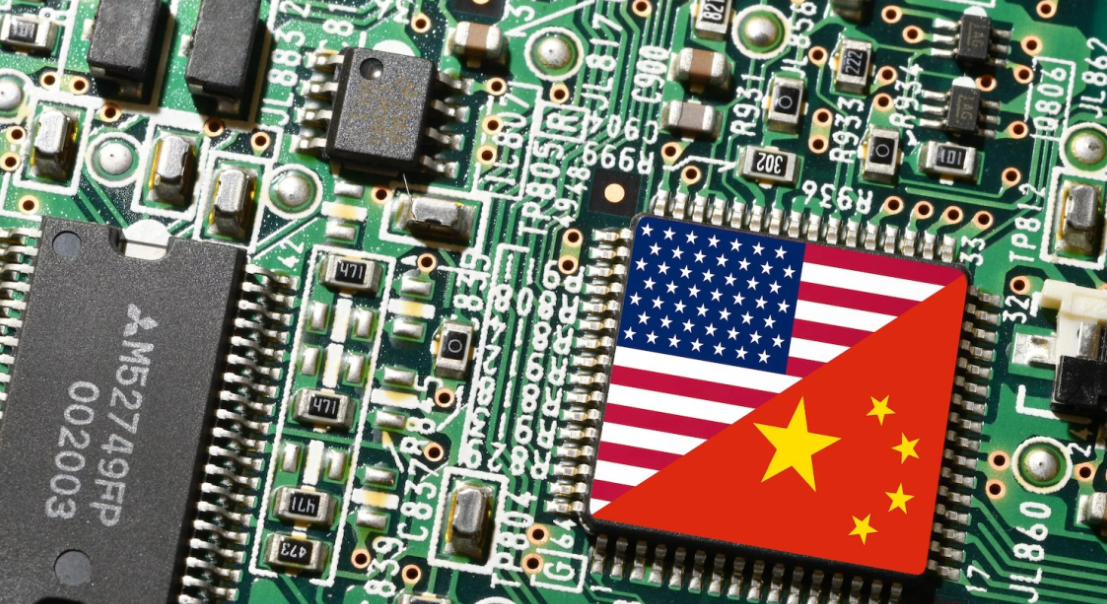Recent tensions between the US and China have raised the spectre of technological decoupling. This column explores the impact of US Entity List restrictions on Chinese firms’ innovation. It shows that US sanctions reduce the quantity and quality of patenting of the targeted Chinese firms, driven by reduced collaboration with US inventors. Sanctions in specific technology fields lead to a decline in the patenting of not only Chinese firms with US collaborators but also of US firms with Chinese collaborators.
China’s accession to the World Trade Organisation (WTO) and integration into international markets catalysed a period of rapid growth and transformation of China’s innovation (Branstetter et al. 2023). The share of patents filed by Chinese firms in the United States Patent and Trademark Office (USPTO) surged from just 0.2% in 2000 to 7.2% in 2022. This growth in patent activity, fuelled by technology transfers and learning by doing through global value chains, underscores the critical role international integration and collaboration have played in building China’s innovation ecosystem.
Technology has, however, become a source of tension between the US and China – raising the prospect of technological decoupling. The US Department of Commerce has increasingly utilised its Entity List to regulate technology transfer and exports of goods containing US components to Chinese entities. For example, the inclusion of Huawei in the Entity List in 2019 prohibited Google from providing its services to Huawei. The number of Chinese firms on this list has increased from three in 1997 to 345 in 2022, with a significant increase in 2018.
US sanctions and the impact on Chinese innovation
Our recent research (Cao et al. 2024) explores how inclusion in the Entity List affects Chinese innovation and what this might mean for the future of global technology networks. To do so, we match firms in the Entity List to patent data from PATSTAT, to capture the number of firm patent applications and their citations – a proxy for patent quality. Sanctioned firms are matched to non-sanctioned firms with similar initial firm characteristics and patent portfolios, by applying propensity score weights.
The research highlights a decline in both the quantity and quality of patents filed by sanctioned Chinese firms, compared to similar non-sanctioned firms. The result is robust to a variety of empirical strategies – difference-in-differences (DID) and event study design accounting for staggered treatment (as in Figure 2). There is evidence of a decline in patent applications in general, but this is magnified for high-technology patents (see Figure 1). But what are the mechanisms driving the innovation slowdown?
Figure 1 Entity list inclusion reduces Chinese firm patenting


Source: PATSTAT Dataset, Spring 2022 version.
Notes: The red dots are the estimated differences in the number of patent applications between sanctioned and unsanctioned firms, shown for the five years before and after the sanctioned firms were added to the Entity List. The blue bar is the 95% confidence interval. The estimates shown are based on Callaway and Sant’ Anna (2021) approach.
Chinese collaboration with the US
Chinese firms have traditionally relied on collaborations with US inventors to stay at the cutting edge of technological innovation. In the pre-sanction period, our data show the most innovative Chinese firms were more likely to collaborate with the US. In addition, collaborations with US innovators are more strongly correlated with patenting than collaborations with other advanced economies.
However, the sanctions have resulted in a breakdown of these critical partnerships, and a shift in collaboration networks. After the inclusion in the Entity List, Chinese firms were less likely to collaborate with US firms in their subsequent patenting. Collaborations with European inventors also declined but by a smaller amount and collaboration with other advanced countries was largely unaffected. Flynn et al. (2024) observe similar trends in academic research, noting that Chinese researchers have decreased their citations of US papers since the rise of US-China tensions in 2016.
A natural question is whether the sanction-induced reduction in patenting was disproportionately concentrated in firms with prior (pre-sanction) US collaborations. We find that the decline in patenting due to Entity List inclusion is driven entirely by Chinese firms with prior US collaborators (see Figure 2). The results are robust to using all patent applications, focusing on only those at USPTO, EPO, or WIPO patent offices or focusing on high-tech patents. These findings are consistent with work on scientific publications by Aghion et al. (2023), who find that restrictions on collaboration between Chinese and US researchers reduced the quality of research of Chinese researchers with prior US collaborations.
Figure 2 Entity list inclusion reduces patenting of Chinese firms with prior US collaborations


Source: PATSTAT Dataset, Spring 2022 version.
Notes: The shaded bars are estimated changes in patent applications for sanctioned firms without pre-sanction US collaboration and the solid bars are estimated changes in patent applications for sanctioned firms with pre-sanction US collaboration. Total patents are the number of unique patents each firm applied (including domestic offices and abroad). We classify each patent to high-tech category based on the EPO’s criteria, using its primary IPC field. The blue dashed line is the 95% confidence interval.
Chinese innovation capacity
Not all Chinese firms have been equally affected – domestic innovation capacity can mitigate the effect of Entity List sanctions. Firms with strong preexisting innovation capacities (measured by higher initial patent stocks), firms in sectors closer to the US technological frontier, and firms in sectors less reliant on US knowledge (measured by the share of citations to US patents) incurred a smaller innovation penalty. In recent years, China’s innovation quality has been converging towards US levels in several technologies, like autonomous vehicles and advanced battery technology (Bergeaud and Verluise 2022), which appears to have softened the long-term impact of US restrictions.
Spillover effects across the innovation network
The Entity List restricts access to specific technologies, but it is applied to particular firms. Our research reveals that US sanctions also negatively affect other Chinese firms operating in the same technological fields as sanctioned firms, even if they themselves are not directly sanctioned. The Entity List discourages Chinese innovation across entire technology fields, primarily driven by firms that had pre-sanction US collaboration
The effects of sanctions can spill over throughout innovation networks (Akcigit et al. 2017). For instance, if the semiconductor field is sanctioned by the US, downstream fields that rely on semiconductor innovations may experience negative impacts due to the sanctions. Conversely, sanctions may foster domestic innovations and increased demand for upstream technologies that the semiconductor sector is dependent on. Consistent with this, we find that the sanctions slow Chinese innovation in downstream fields, whereas firms upstream patent more.
Interestingly, the spillover effects extend to firms outside of China, though the magnitude varies. For instance, while US firms in sanctioned fields have been relatively insulated, US firms that previously collaborated with Chinese partners have also experienced a decline in patenting activity. This highlights the interconnected nature of global innovation networks, where restrictions on one firm or country can ripple across borders, affecting innovation outcomes in unexpected ways.
Conclusions
There is widespread concern that US and Chinese policies could lead to costly economic divisions. Some recent analyses have suggested that extreme forms of decoupling, such as the division of trade and technology into blocs of East and West could have severe consequences (Goes and Bekkers 2022, Jinji and Ozawa 2024). We find evidence suggesting that even less extreme policy measures, such as the inclusion of some firms on the US Entity List, can have significant adverse effects. Inclusion in the US Entity List negatively impacts the innovation not only of the targeted firms, but also other Chinese firms operating within the same technology. US sanctions led to large reductions in innovation of both Chinese firms that previously collaborated with the US and US firms that collaborated with China, undermining mutual gains from bilateral collaboration.
Source : VOXeu





